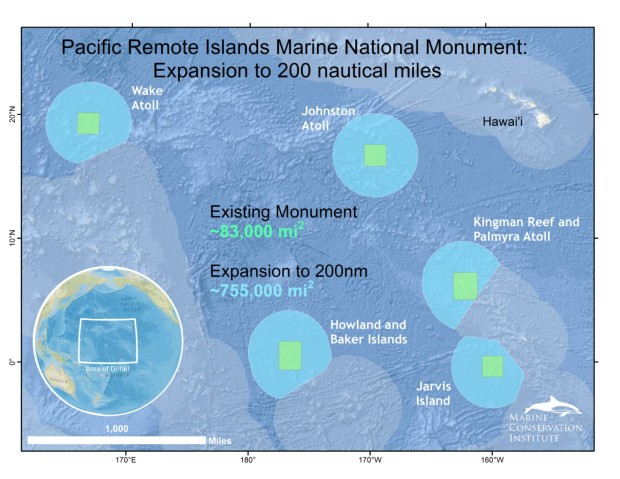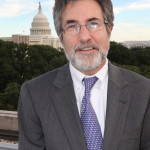We have much more to do and your continued support is needed now more than ever.
Treasure Trove of Pacific Wildlife Need Your Support for Expanded Marine National Monument

Now, President Obama has the opportunity to protect a much, much larger area of deeper waters around the islands for us and future generations. The expanded areas would help preserve biodiversity and abundance as the earth’s oceans continue to warm and acidify.

Ecological Treasure Trove
The five interconnected protected areas that make up the Pacific Remote Islands Marine National Monument, and the waters around them, are an ecological treasure unlike anything else in the U.S. They are some of the richest areas on Earth for marine life, and some of the least disturbed left on earth. They are of global and regional importance for large predatory fishes like endangered Bluefin tuna and declining Bigeye tuna, as well as endangered seabirds, marine mammals and sea turtles.
Expanding the boundary of the monument out to 200 nautical miles provides protection for an entire ecosystem – from near shore to the deep sea and would make the monument the largest protected network on earth.
The expanded monument would protect a treasure trove of unique and irreplaceable natural resources including:
- Almost 250 seamounts, or undersea mountains—the majority of which are unexplored. Every research expedition to this area discovers large numbers of new marine species.
- An estimated 14 million seabirds representing 19 species use these areas as feeding and breeding grounds, including the endangered Black-footed Albatross and Phoenix Petrel.
- Important habitat for protected species of sea turtles and marine mammals, some of which are critically endangered, like the Leatherback and Green sea turtle species, and the Sei Whale and Blue Whale.
- Remarkably rich coral ecosystems, with the oldest coral up to 5,000 years old.
Those five American Presidents starting with Calvin Coolidge and ending with Barack Obama are about to be joined by some others. Several presidents of Pacific nations that are near the proposed expansion –President Tong of Kiribati, President Remengasau of Palau, and Prime Minister Puna of the Cook Islands have all pledged to create large marine protected areas near ours to help protect an even bigger part of the central Pacific ocean in this era of overfishing and climate change.
Please Lend Your Support!
![]() You can help convince President Obama to complete the job and officially designate the monument expansion by sending your comment to PRI@noaa.gov no later than August 15. Or submit by using the language at: bit.ly/SupportPRIMNM
You can help convince President Obama to complete the job and officially designate the monument expansion by sending your comment to PRI@noaa.gov no later than August 15. Or submit by using the language at: bit.ly/SupportPRIMNM
If you live in or are visiting Hawai‘i, consider giving your opinion in person at a Town Hall scheduled for this coming Monday, August 11, in Honolulu at the Ala Moana Hotel, Carnation Room, 410 Atkinson Drive Honolulu, from 5:00 – 7:00 pm.
About the Author
 Mike Gravitz is the Director of Policy and Legislation for the Marine Conservation Institute in Washington, DC
Mike Gravitz is the Director of Policy and Legislation for the Marine Conservation Institute in Washington, DC




















